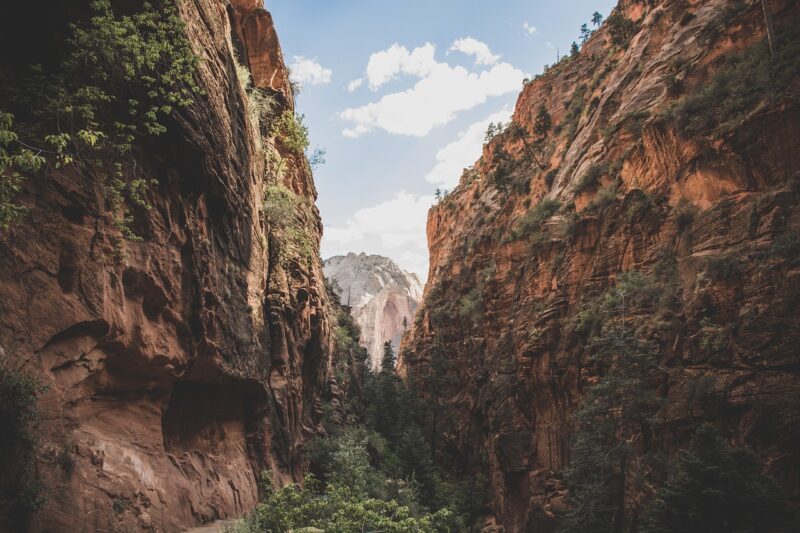How Canyons Are Carved by Rivers Over Time
November 16, 2024

Canyons are natural wonders that inspire awe and curiosity. These majestic formations showcase the power of nature and the intricate processes that shape our planet. But how exactly are canyons formed? One of the primary forces behind canyon formation is the relentless flow of rivers, which, over eons, carve through solid rock to create stunning landscapes. In this article, we will explore the fascinating interplay between rivers and geology, the various processes involved in canyon carving, and some iconic examples of canyons from around the world.
1. The Basics of Canyon Formation
Canyon formation primarily occurs through a combination of erosion, weathering, and geological processes over extensive periods. The primary factors contributing to canyon carving are:
– **Water Flow:** Rivers and streams transport water, sediment, and rock fragments. As water flows, it exerts force on the riverbed, gradually removing material.
– **Weathering:** The physical and chemical breakdown of rocks due to environmental factors such as temperature changes, precipitation, and the presence of acids in rainwater.
– **Geological Composition:** The type of rock and earth materials present in an area significantly influence how quickly and effectively a canyon will form. Softer rocks erode more quickly than harder rocks, allowing rivers to carve deeper and wider pathways over time.
Understanding these fundamental principles is crucial for appreciating the grandeur of canyons.
2. The Erosion Process
Erosion is the process responsible for removing soil and rock from one location and transporting it to another. In the context of canyon formation, the erosion process can be broadly understood as comprising three key stages:
– **Initial Erosion:** At the beginning of a river’s journey, it may flow over relatively flat land. As the water flows, it begins to collect sediments and debris, which increases its erosive power. Over time, this continued flow starts to channel the riverbed, leading to the initial incision into the landscape.
– **Deepening and Widening:** As the river continues to flow over the same path, it erodes the banks and riverbed further. The water carves out deeper channels as it wears away rock and sediment. This process can be accelerated by high water flow, particularly during periods of flooding.
– **Transport and Deposition:** As materials are eroded from the riverbed, they are transported downstream, where they may eventually be deposited in other locations, contributing to the overall river landscape. This ongoing cycle of erosion and deposition is a critical aspect of how canyons evolve over time.
During this process, the flow of water is influenced by various factors, including seasonal changes, rainfall patterns, and geological events that affect river systems.
3. The Role of Other Forces in Canyon Formation
While river erosion is the primary driver of canyon formation, other geological forces can contribute as follows:
– **Tectonic Activity:** The movement of tectonic plates can uplift land, leading to the steepening of river grades, increasing the energy and erosive power of rivers. Fault lines and earthquakes can disrupt the landscape, creating new pathways for rivers to follow.
– **Glaciation:** In some regions, glaciers have played a significant role in shaping canyons. As glaciers advance and retreat, they carve out large valleys and sharp ridges, which rivers later follow and deepen.
– **Human Impact:** While natural processes dominate canyon formation, human activity such as damming rivers, deforestation, and mining can disrupt these natural processes, leading to altered river paths and new erosion patterns.
These additional factors highlight the dynamic nature of landscape evolution and the interconnected environmental systems at play.
4. Iconic Examples of Canyons Carved by Rivers
Throughout the world, there are numerous examples of stunning canyons shaped by rivers. Some noteworthy examples include:
– **Grand Canyon, USA:** One of the most iconic canyons globally, the Grand Canyon was carved by the Colorado River over millions of years. Its immense size and intricate geological formations showcase the erosive power of water and time.
– **Colca Canyon, Peru:** Often considered the deepest canyon in the world, Colca Canyon was shaped primarily by the Colca River. The area’s unique geology and the presence of the giant Andean condor add to its allure.
– **Antelope Canyon, USA:** Known for its stunning light beams and swirling rock formations, Antelope Canyon has been shaped by flash flooding and erosion from rainwater, primarily through the process of hydraulic action.
– **Fish River Canyon, Namibia:** This massive canyon, formed by tectonic activity and erosion, showcases the interplay between geological forces and river erosion, drawing visitors from around the world.
These canyons serve as powerful reminders of nature’s capacity to reshape landscapes through time.
5. The Future of Canyon Formation
As climate change and human activity continue to impact the natural environment, the processes influencing canyon formation are also evolving. Factors to consider include:
– **Changing Water Flow:** Alterations in precipitation patterns, the frequency of floods, and droughts can significantly affect river flow and erosion rates. Diminished river flow can hinder the carving processes essential for canyon formation.
– **Human Impact:** Urbanization, agriculture, and infrastructure development can disrupt natural water flow and sediment transport, potentially leading to the erosion of canyons.
– **Conservation Efforts:** As awareness of environmental issues grows, conservation efforts are being implemented to preserve canyon ecosystems and maintain the delicate balance of natural forces that shape them.
The future of canyon formation hinges on both natural and anthropogenic influences, emphasizing the need for responsible stewardship of our planet’s geological treasures.
Conclusion
Canyons are magnificent natural formations that illustrate the profound impact of rivers and time on our planet’s landscape. Through the processes of erosion and geological forces, these intricate structures evolve, continually reshaped by the flow of water and the elements. By understanding how canyons are formed and the factors that influence their formation, we can better appreciate the beauty and complexity of the world around us.
As we continue to explore and protect these stunning natural wonders, it is vital to recognize our role in their preservation. The ongoing interplay between rivers and geology serves not only as a testament to nature’s power but also as a reminder of our responsibility to care for the environment.
Whether you are visiting the breathtaking Grand Canyon or exploring the lesser-known nooks and crannies of river-carved landscapes, every canyon tells a story etched in stone, waiting to be discovered.







